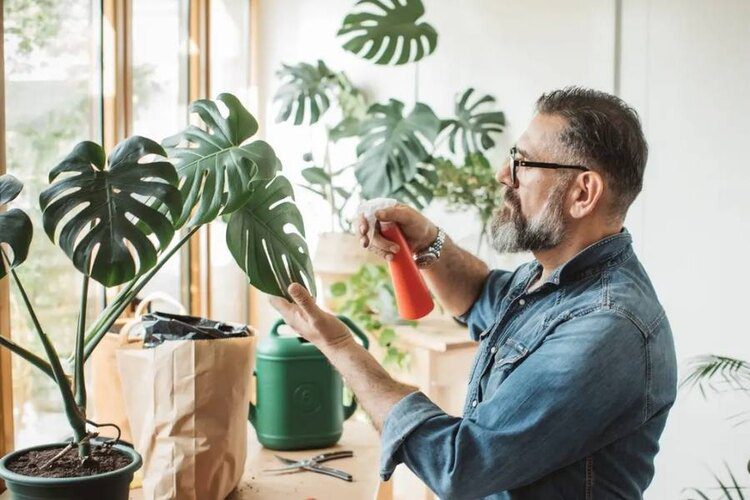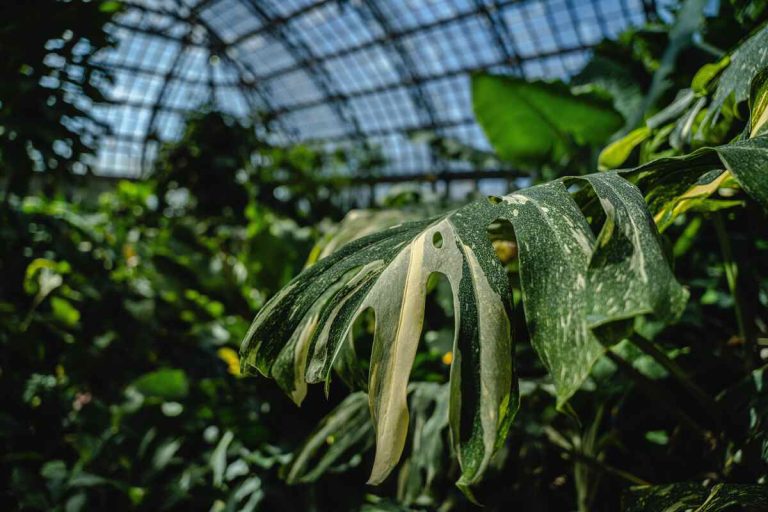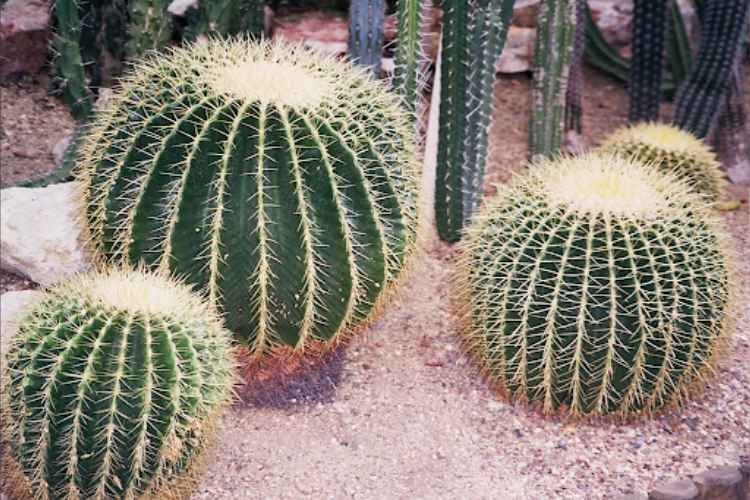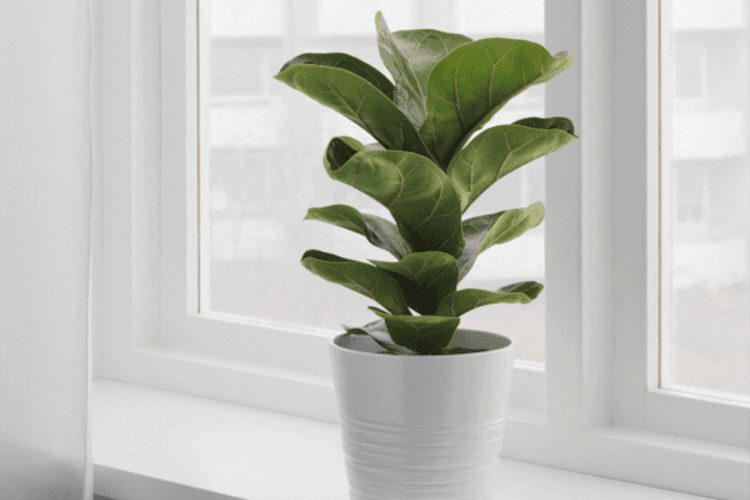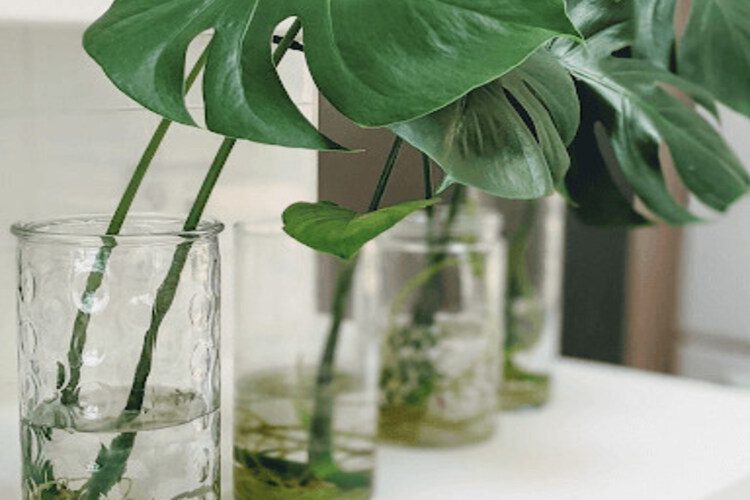Does Potted Bamboo Need Fertilizer? Behind Its Lush Green

Fertilizer provides bamboo plants with the necessary nutrients for steady and strong growth. How about lucky bamboo? Does potted bamboo need fertilizer?
Lucky bamboo does not require fertilizer, but it can benefit from fertilization. So, you may still want to fertilize them for maximum strength, height, and growth. In this article, FlowerBedNursery will provide comprehensive guidance on fertilizing lucky bamboo.
Does Potted Lucky Bamboo Require Fertilizer?
Lucky bamboo does not necessarily require fertilizer, but you should fertilize your bamboo two to three times a year if you want it to be strong, green, and healthy.
While grass can benefit from fertilizer to maintain its health and appearance, a small amount can transform it into a dense, beautiful green landscape. Since lucky bamboo plants belong to the grass family, the same remains true. Furthermore, purely organic plant food may not always contain phosphorus, but it can still be effective for bamboo. Avoid using lawn fertilizer with chemicals that kill weeds, as it can harm your bamboo plant.
When used correctly, fertilizers can promote taller, bushier, stronger, and more vibrant plants. However, if used incorrectly, it might have the opposite effect. Fertilizing bamboo plants can help them recover their vitality after any period of stress or damage. To give it a lift in the spring, cut down the decaying canes and feed it.
What Kind Of Fertilizer Do You Use For A Lucky Bamboo Plant?
Lucky bamboo plants benefit from fertilizer that has a high concentration of nitrogen. Besides, you can feed your tree any nutrients. Your plant also needs phosphorus and potassium. It is essential to find out the balanced N-P-K ratio in the fertilizer for your plant. Organic manure, or organic compost, is a popular treatment for bamboo and can be beneficial. You can put organic fertilizer on the topsoil. It would be best to add irrigation for an even distribution of nutrients.
How Do You Fertilize Potted Lucky Bamboo?
No matter what kind of fertilizer you choose, you need to apply the NPK ratio to it. The best time to fertilize your plant is in the early spring and throughout the growing season.
In spring
The ideal bamboo fertilizer in the spring is slow-release and high in nitrogen. The plant wants enough nitrogen in the early spring as new growth starts. Hence, a composition close to 21-5-6 is appropriate. When the bamboo shoots start to grow in the spring, you can use a liquid fertilizer that works quickly. You may also use old compost or powdered fertilizers designed for plants. Also, remember to adhere to the guidelines on the package.
In summer
In summer, you can continue using fertilizer with a high nitrogen concentration. If you live in an area where the winter is mild and frost-free, you need to give your tree a third feeding about three to four months after the last one.

How Do You Encourage Bamboo Plants To Grow?
Lucky bamboo plants can grow quickly with appropriate conditions such as watering, soil, and pruning. Fortunately, planting indoors gives you complete control over the surrounding conditions. Here are some tips to optimize the environment for your trees to flourish:
Watering
Water is one of the first factors to focus on, besides the bamboo fertilizer. Always remember that the plants should be watered after fertilizing so that the nutrients are best dissolved.
Lucky bamboo plants may require regular watering in their first one or two years, but their watering needs can decrease over time. They can adapt to the environment quickly after that. Then, you just need watering during droughts or extreme heat.
Soil
Lucky bamboo plants prefer well-drained soil and can tolerate a range of soil types. Your plant can grow fast if you put sand, gravel, or mulch into the pots. Then, water won’t get trapped around the plant’s roots.
Pruning

Pruning can help promote healthy growth in bamboo plants. You can do it in two ways:
- Annual trimming: to encourage the plant to save energy for a new shoot formation.
- Annual pruning: to help the plant develop its roots and shoots
Does Lucky Bamboo Need Sun To Grow?
Some lucky bamboo species need more sunshine than others. Some don’t require much light and enjoy partial shade, mainly during the daytime. Larger varieties, such as the Phyllostachys, usually require the greatest sunshine.
Conclusion
The potted lucky bamboo also needs fertilizer for maximum development. Feeding the tree is not a challenging task. The ultimate rule should be finding the correct ratio of NPK. You also need to pay attention to how and how often you feed your plant.
Hopefully, you will find this article helpful. If you need any further information, please feel free to ask. Thank you for following this post!


